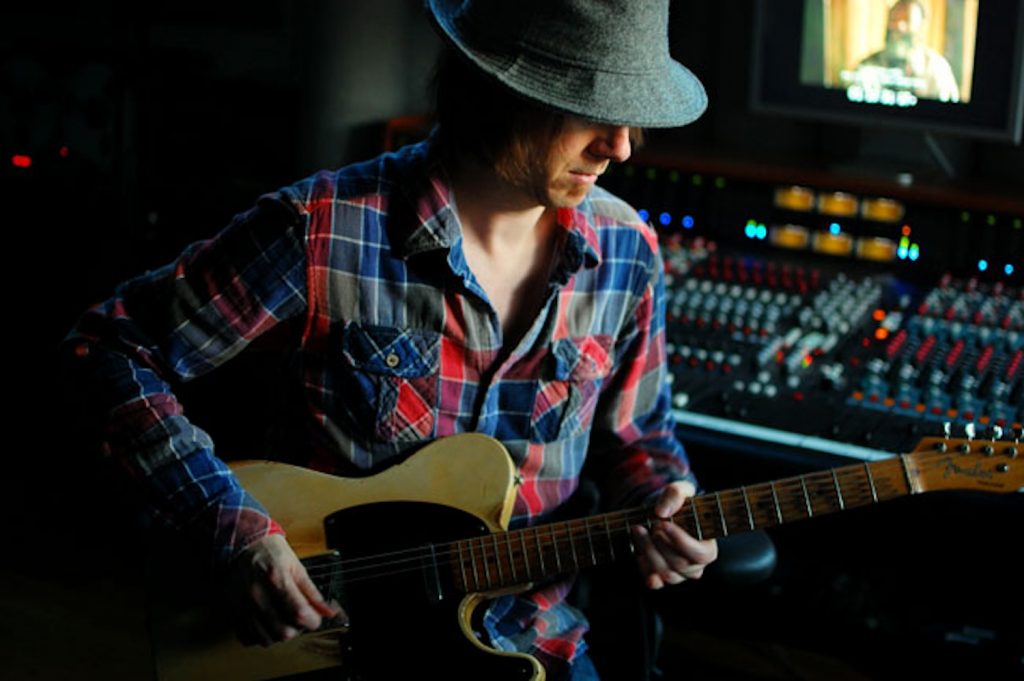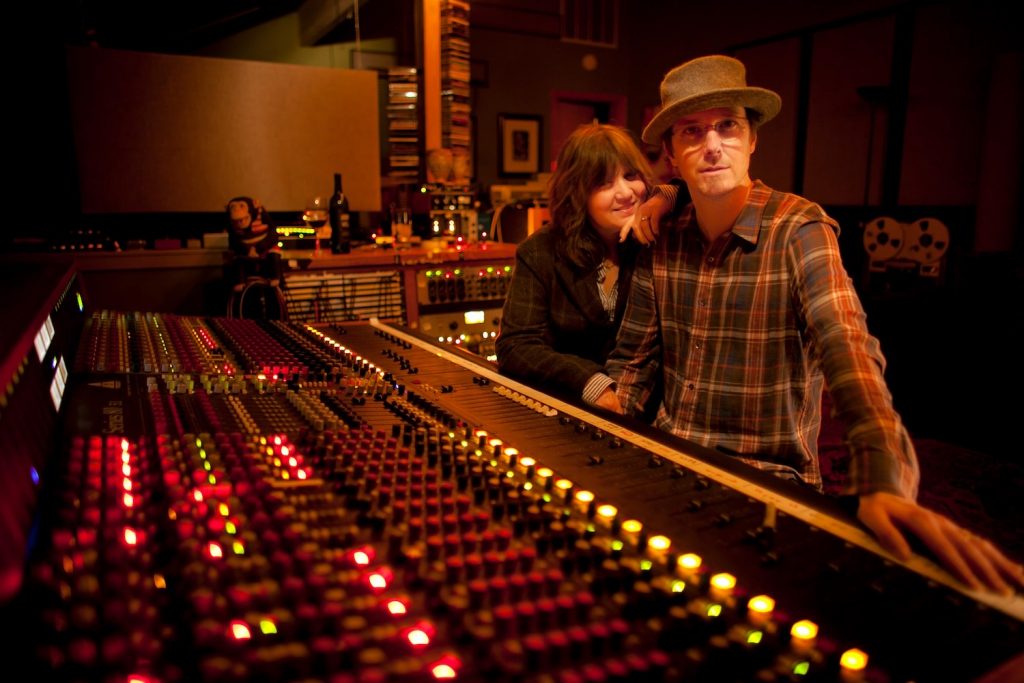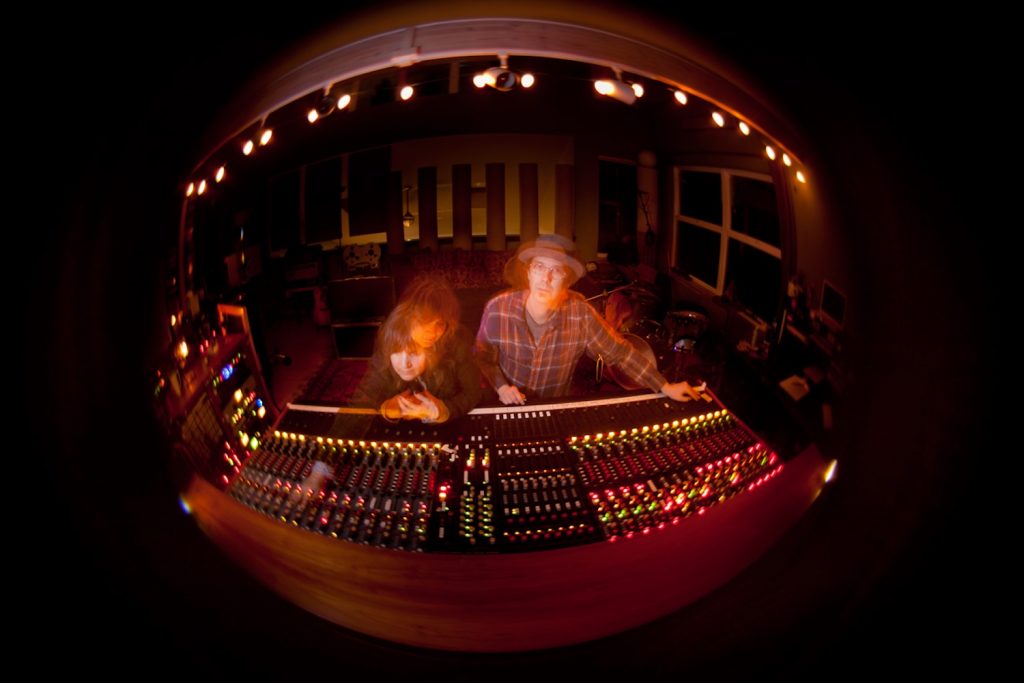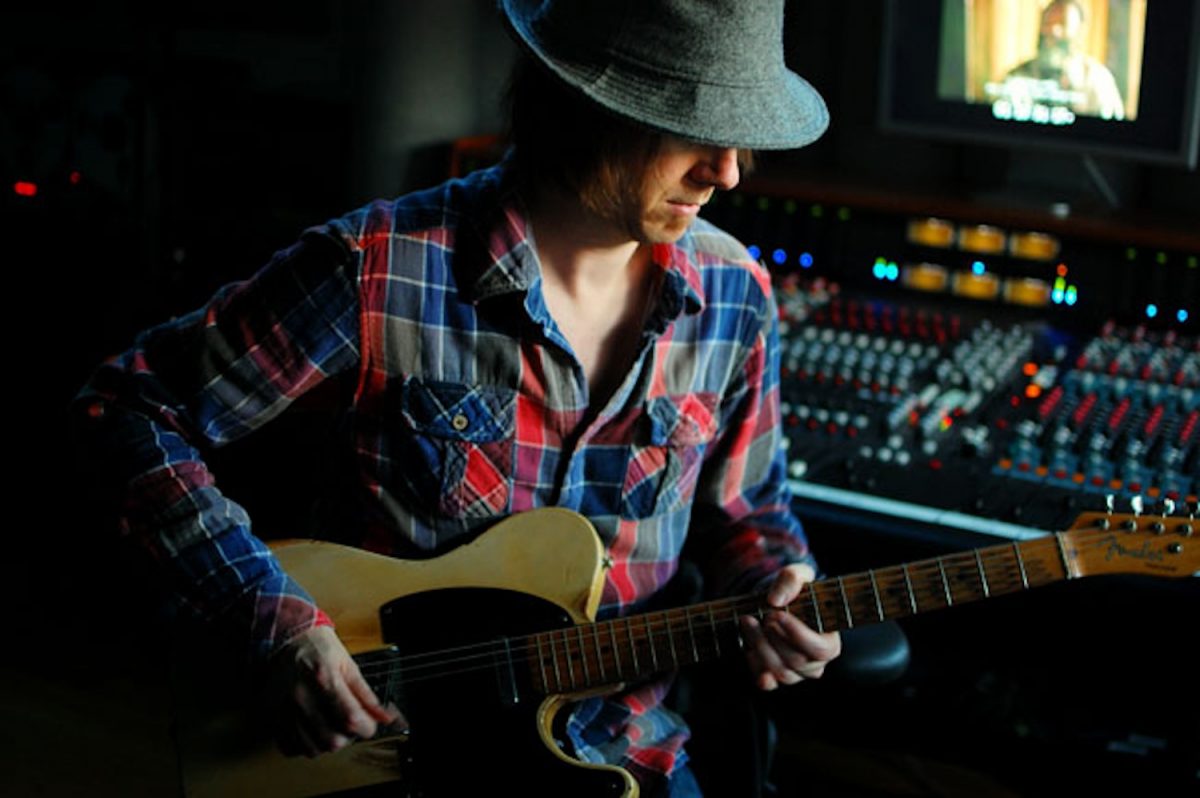
Pete Droge has a lot to be thankful for this holiday season. Several months removed from the most debilitating symptoms of an eight-year bout of chronic fatigue syndrome (ME/CFS), the longtime Washington State resident is finally feeling enough like himself to move forward on a few fronts. First, there’s the Black Friday release of two titles on his Puzzle Tree imprint, both collaborative efforts with his life partner of 30-plus years, Elaine Summers. The Droge & Summers Blend, Volume Three compiles 13 leftovers, outtakes, alternate versions and demos from 2008 to 2015, plus a whimsical new song, “Big Time Dream.” For completists, The Droge & Summers Blend Sessions collects all 23 tracks recorded by the pair. One of those, “Two Of The Lucky Ones,” was featured on the soundtrack to 2009’s Zombieland. Another, “Wonder,” found its way onto the pilot for The CW’s Zombie. It’s worth noting that neither has any overt post-apocalyptic horror tie-ins.
Droge is also working with producer Paul Bryan (Aimee Mann) on his sixth solo album, drawing on more recent material from the “fatigue years.” The first single, the unassumingly beautiful “Fading Fast,” was released in February. The sessions also produced “Lonely Mama,” one of a batch of tunes that address Droge’s coming to terms with his status as an adoptee. It’s set for release on seven-inch vinyl via Pearl Jam guitarist Mike McCready’s HockyTalkter label sometime next year. In the meantime, Droge has been doing a great job of staying in touch with fans through his Substack page.
Lastly, next year marks the 30th anniversary of Droge’s solo debut, Necktie Second. It contains “If You Don’t Love Me (I’ll Kill Myself),” his only hit single, and kicked off a series of critically lauded, if commercially disappointing, major-label releases. The streak culminated with The Thorns, the sole LP from his 2003 singer/songwriter “supergroup” project with Matthew Sweet and Shawn Mullins. Look for some sort of reissue package for Necktie Second next year.
We tracked down Droge at home on Vashon Island, an eclectic Puget Sound community 15 minutes from Seattle by ferry, where he’s slowly getting back in the groove.

Though it may not have appeared that way, the early 2000s were a productive time for you.
I was a full-on workaholic. I recorded, mixed and delivered an entire film score (2002’s Tattoo: A Love Story) in 30 days. Right before that, I did the music for a documentary called Catching Out. During the period with the Thorns, any time I wasn’t on the road, I was home producing. It was a really, really crazy time.
For those unfamiliar with chronic fatigue syndrome, what’s it been like for you?
At this point, I’m still in the fatigue zone, but I’m doing so much better. Fortunately for me, I didn’t have fibromyalgia and a lot of pain issues. It was just severe exhaustion. I also experienced brain fog and post-exertional malaise. I might get a little adrenaline kick that would push me through what I was doing. But once I finished, I’d be completely wiped out. I call my deep fatigue years “the heavies.” It’s hard to describe. Probably the closest I can come up with is how you’d feel if you’re completely jetlagged and you drive 12 hours on top of that. That’s how I’d feel all the time.
Is it possible to pin down a cause?
You get tested for lots of stuff—things like Epstein-Barre virus, heavy-metal poisoning, mold toxicity, thyroid issues. I had a Lyme-like infection and chronic Epstein-Barre. The treatment for those infections caused die-off and made me feel even worse. It’s one of those mystery illnesses that has so many root causes. There’s still so much they don’t know. A silver lining of the pandemic is that a lot of money is getting poured into COVID research, and that’s affecting chronic fatigue, as well. There seems to be some crossover with people who get long COVID and those with chronic fatigue syndrome.
For someone as productive as you, it had to be incredibly frustrating.
It was like being in a dream where you’re trying to run, but you can’t. When I was resting and recuperating, I’d have all this time to think about the things I wanted to do. I’d lay in the bathtub and think about making a new record and who I wanted to collaborate with—all this planning and scheming and plotting the future, and just no energy to act on it. I did manage to keep a positive attitude through it all. I focused on a gratitude practice—one of those things I encountered in my recovery. That helped me stay away from depression, which definitely occurred a few times but surprisingly less than I would’ve expected.
When did you turn a corner?
Several months ago. I can’t really pinpoint an exact time, but that’s when I started to think about getting some music out. It feels really good to finally have the energy to do what I love to do.

How to the collaboration with Elaine come about?
I don’t even recall the moment we decided to do it. I was working on other stuff, the there was never a time when I could fully commit to the Droge & Summers Blend. In most cases, the ideas for the songs came from Elaine. At the time we write the songs, we’re developing the harmonies. That’s something we did with the Thorns, as well. It’s the way you come up with melodies that are conducive to harmonies, early on.
Speaking of the Thorns, that LP showed so much promise.
If the record had sold better and been more of a success in the eyes of Columbia, it would’ve kept going. We turned that corner in 2004, after working the record for most of 2003. We recorded a version of the Jayhawks’ “Blue” for radio. If that had been a hit, I think my life would’ve looked very different. It really didn’t come down to the three of us—the label wasn’t spending the money on us. But I also think we were all ready to go home. It was the better part of two years of our lives.
You released three solo album on major labels from 1994 to 1998. How do you look back on that time?
I definitely felt a lot of pressure in those days. Everything felt make or break—but not it in bad way, more like in a “this is really fun … the stakes are really high” way. It was thrilling. I remember getting ready to do an interview with MTV and finding out we got the Petty tour. You’re in your mid-20s, and there’s this sort of infrastructure built around your career. I couldn’t even get a credit card, and suddenly there was all this big-time stuff going on around me. It was pretty intense.
You were also coming up at time a when solo acts weren’t exactly in vogue.
The label actually tried to get me to use a band name—they felt like it would be an easier marketing approach. But management stuck to their guns.
How did your relationship with Elaine coincide with all of that?
I met Elaine in January 1993, and I was signed right after my showcase at South By Southwest in March of that year.
It must’ve been nice to have her there as a stabilizing element.
Incalculable. It was so great. She might’ve saved my life a few times.
—Hobart Rowland






